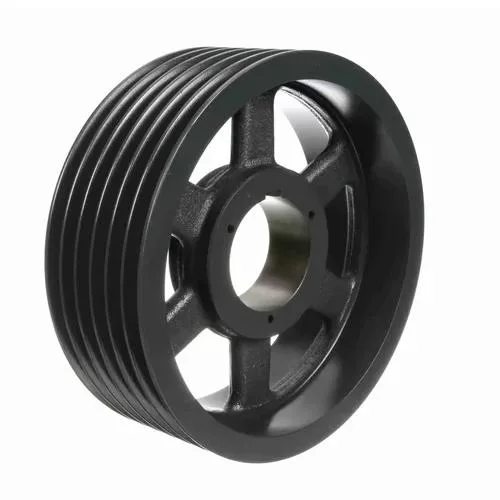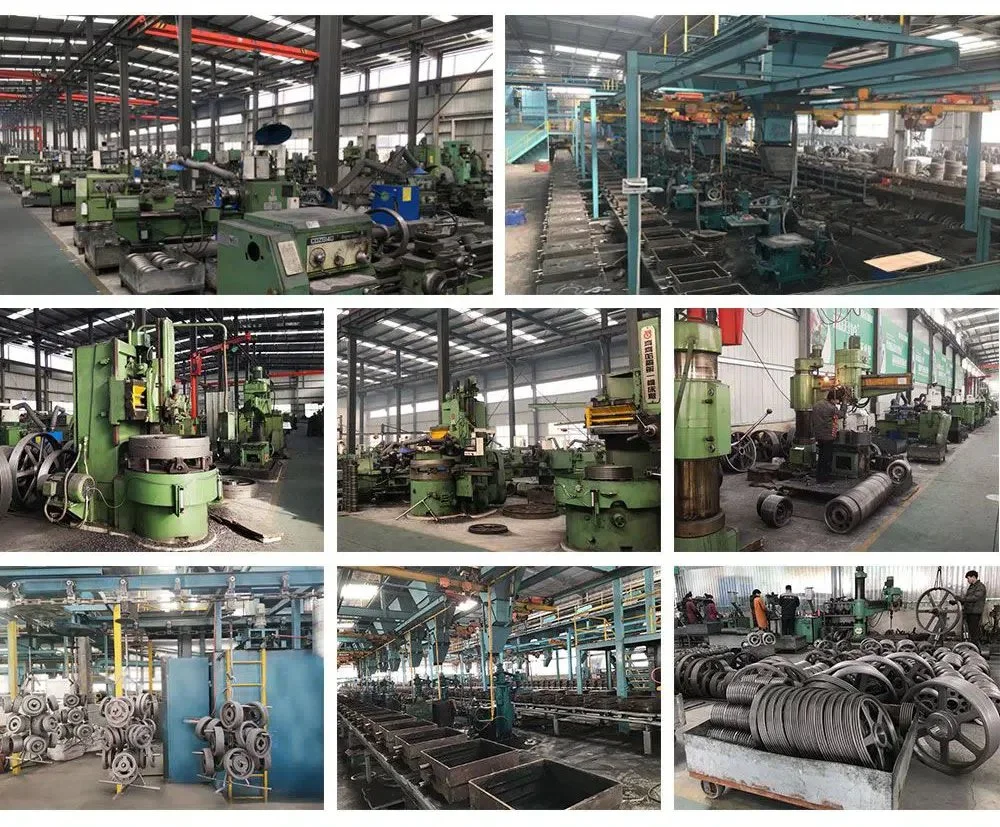Packaging Machinery Taper Pulley: Comprehensive Guide
1. Introduction to Taper Pulley in Packaging Machinery
Taper pulleys play a pivotal role in packaging machinery, facilitating seamless motion and power transmission. They are specifically designed to manage the torque and speed variations required in packaging processes. The unique tapering design ensures a tight fit with minimal slippage, thereby enhancing operational efficiency.
2. Understanding the Taper Pulley Mechanism
The mechanism of taper pulleys is engineered to provide optimal performance. The taper design allows for a gradual increase in diameter, which helps in the distribution of stress and reduces wear and tear. This results in a longer lifespan for the machinery components.
3. Applications of Taper Pulleys in Packaging
Taper pulleys are versatile components used in various packaging machinery such as conveyor belts, labeling machines, and wrapping equipment. They ensure precision in movement and are integral to maintaining the consistency and quality of packaging.
4. Advantages of Using Taper Pulleys
There are numerous advantages to using taper pulleys in packaging machinery. These include improved power transmission efficiency, reduced maintenance costs, and enhanced durability. The taper design also allows for easy installation and removal, thus minimizing downtime.
5. Material Selection for Taper Pulleys
Choosing the right material for taper pulleys is critical for their performance. Common materials include steel, aluminum, and plastic. Each material has its own set of benefits and is selected based on the specific requirements of the packaging machinery.
6. Manufacturing Process of Taper Pulleys
The manufacturing process of taper pulleys involves precision engineering techniques. CNC machining is commonly used to ensure high accuracy and quality. The process includes forging, machining, and finishing to achieve the desired specifications.
7. Customization Options for Taper Pulleys
Customization is a key feature in the production of taper pulleys. Manufacturers offer custom designs to meet specific needs, including variations in size, material, and surface treatment. This flexibility ensures that the pulleys perfectly match the machinery requirements.
8. Maintenance Tips for Taper Pulleys
Proper maintenance is essential to extend the lifespan of taper pulleys. Regular inspections, lubrication, and timely replacement of worn-out components are crucial steps. Implementing a maintenance schedule can prevent unexpected breakdowns and ensure smooth operation.
9. Common Issues and Troubleshooting
Despite their robustness, taper pulleys can encounter issues such as misalignment, excessive wear, and vibration. Identifying and addressing these problems promptly can prevent major disruptions in the packaging process. Common troubleshooting steps include realignment and replacing damaged parts.
10. Innovations in Taper Pulley Design
Innovations in taper pulley design are continuously emerging, driven by advancements in materials science and engineering. Modern designs incorporate lightweight materials and enhanced structural integrity to boost performance and reduce energy consumption.
11. Integration with Modern Packaging Machinery
Taper pulleys are seamlessly integrated into modern packaging machinery, contributing to advancements in automation and precision. Their compatibility with high-speed operations and complex systems makes them indispensable components in the packaging industry.
12. Cost-Effectiveness of Taper Pulleys
The cost-effectiveness of taper pulleys lies in their durability and low maintenance requirements. Investing in high-quality taper pulleys can lead to significant savings in the long run, as they reduce the need for frequent replacements and repairs.
13. Environmental Impact and Sustainability
Sustainability is a growing concern in the manufacturing sector. Taper pulleys contribute to environmental sustainability by enhancing energy efficiency and reducing material waste. Manufacturers are also exploring eco-friendly materials and production methods to minimize their environmental footprint.
14. Safety Considerations
Safety is paramount in packaging machinery operations. Taper pulleys are designed to meet stringent safety standards, reducing the risk of accidents and ensuring the well-being of operators. Proper training and adherence to safety protocols are essential to prevent mishaps.
15. Case Studies: Successful Implementations
Case studies highlight the successful implementation of taper pulleys in various packaging machinery. These real-world examples demonstrate the benefits and performance improvements achieved through their use. Companies have reported enhanced productivity and reduced operational costs.
16. Future Trends in Taper Pulley Technology
The future of taper pulley technology is promising, with ongoing research focusing on advanced materials and smart integration. Emerging trends include the use of composite materials, IoT-enabled monitoring systems, and AI-driven optimization for predictive maintenance.
17. Selecting the Right Taper Pulley for Your Needs
Selecting the right taper pulley involves considering factors such as load capacity, speed requirements, and environmental conditions. Consulting with experts and leveraging technical resources can help in making informed decisions to ensure the best fit for your packaging machinery.
18. Installation Guidelines
Proper installation of taper pulleys is crucial for their performance. Following manufacturer guidelines and using the right tools can ensure a secure fit. It is also important to regularly check for alignment and tension to maintain optimal operation.
19. Comparing Taper Pulleys with Other Pulley Types
Comparing taper pulleys with other pulley types, such as flat pulleys and timing pulleys, reveals distinct advantages. Taper pulleys offer superior grip and reduced slippage, making them ideal for applications that require high precision and reliability.
20. The Role of Taper Pulleys in Automation
Taper pulleys play a significant role in the automation of packaging processes. Their ability to handle high speeds and varying loads makes them suitable for automated systems. They contribute to the efficiency and accuracy of robotic and conveyor operations.
21. Quality Assurance and Testing
Quality assurance and testing are integral to the production of taper pulleys. Rigorous testing ensures that the pulleys meet industry standards and perform reliably under various conditions. Quality control measures include dimensional accuracy checks and load testing.
22. Expert Tips for Optimizing Taper Pulley Performance
Experts suggest various tips for optimizing the performance of taper pulleys, such as selecting the right lubricant, maintaining proper tension, and regular cleaning. Implementing these practices can significantly enhance the longevity and efficiency of the pulleys.
23. Impact of Taper Pulleys on Packaging Speed
Taper pulleys have a direct impact on packaging speed. Their design enables smooth transitions and quick adjustments, contributing to faster production rates. This is particularly beneficial in high-demand scenarios where speed is critical.
24. Enhancing Packaging Precision with Taper Pulleys
Packaging precision is crucial for product integrity and customer satisfaction. Taper pulleys enhance precision by providing consistent and controlled movement. This is essential for processes such as labeling, filling, and sealing, where accuracy is paramount.
25. Conclusion: The Future of Taper Pulleys in Packaging
The future of taper pulleys in packaging machinery looks bright, with continuous advancements driving their evolution. They remain a cornerstone of efficient and reliable packaging operations, supporting the industry’s growth and innovation.

Company Introduction and Product Promotion
Our company is a leading player in the Chinese pulley market. Our product range includes HTD pulley, plastic pulley, timing pulley, belt idler pulley, belt pulley, v pulley, compound pulley, and heavy-duty pulley. We boast a state-of-the-art manufacturing facility with 300 sets of fully automated CNC production equipment and fully automated assembly equipment. Our products are known for their superior quality, competitive pricing, and exceptional service. Customers are welcome to provide drawings and samples for customization, ensuring that their specific needs are perfectly met.

Author: Czh